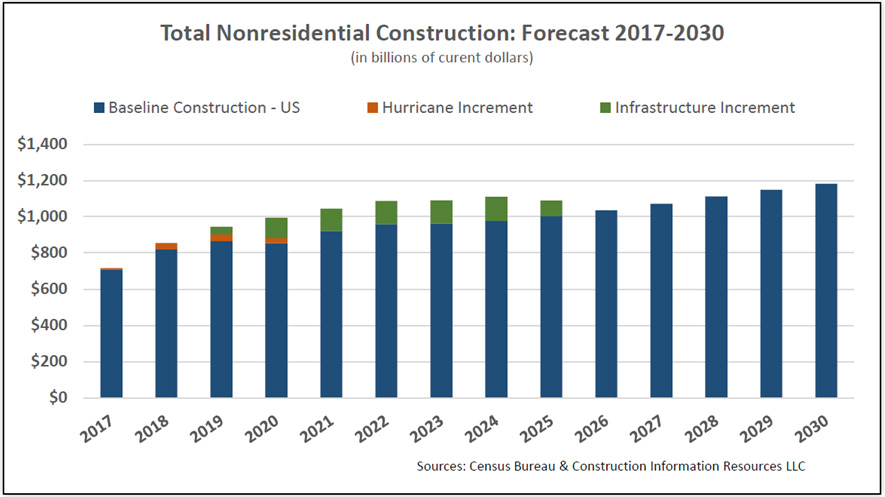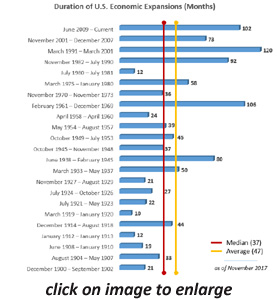
The team that developed the Construction Labor Market Analyzer, Construction Industry Resources, LLC, released this morning a new report titled The Long-Term Outlook for Construction. The report focuses on the near-and long-term prospects for the nonresidential construction marketplace, based on forecasts of the demand for the skilled construction trades over the next 10-15 years. The report lists factors which restrain and aid nonresidential construction, and even accounts for the 2017 hurricane season in which hurricanes Harvey and Irma damaged much of Texas, Louisiana, Florida, and more. The analysis also considers the impacts of a proposed $1 trillion program of spending on U.S. infrastructure, proposed by President Trump during his campaign. From the report:
The report lists factors which restrain and aid nonresidential construction, and even accounts for the 2017 hurricane season in which hurricanes Harvey and Irma damaged much of Texas, Louisiana, Florida, and more. The analysis also considers the impacts of a proposed $1 trillion program of spending on U.S. infrastructure, proposed by President Trump during his campaign. From the report:
“The latest proposal by one U.S. Senator, Blueprint to Rebuild America’s Infrastructure, would include roads, bridges, railways, water systems, broadband networks, Veteran’s Administration Hospitals, as well as schools and airports throughout the United States. The ‘Blueprint’ provides detailed spending by program, for example it allocates $560 billion to the federal highway and transit programs, $125 billion for a federal infrastructure bank, et al.”
Finally, the report’s section on Practical Application of the Forecast begins:
“The improving economy has brought more than just a soaring stock market and its attendant growth, it has facilitated a rise in construction activity and jobs. Yet, while the construction labor force has risen above its recessionary low as workers have entered or re-entered the industry, the construction labor force frustratingly remains below its pre-recession peak. This is particularly true for the most highly skilled labor force, and many new entrants lack the most in-demand skills. As such, firms continue to report turning away work due to the labor shortfall, whereas others report longer hours and higher pay for skilled workers in order to complete jobs.”
You may download the entire report to read more.


